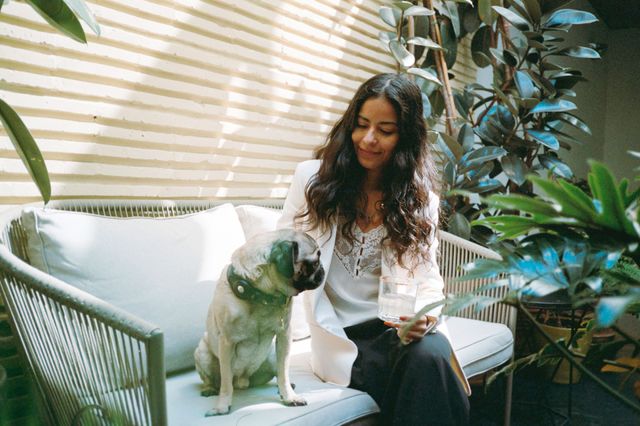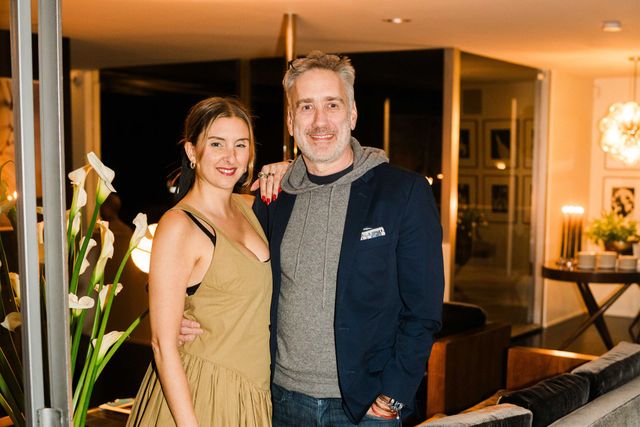Conversation with Susan Theunissen of Casacosta
- Category
- Q&A
- Written by
- Roshan McArthur
- Published
- May 12, 2022
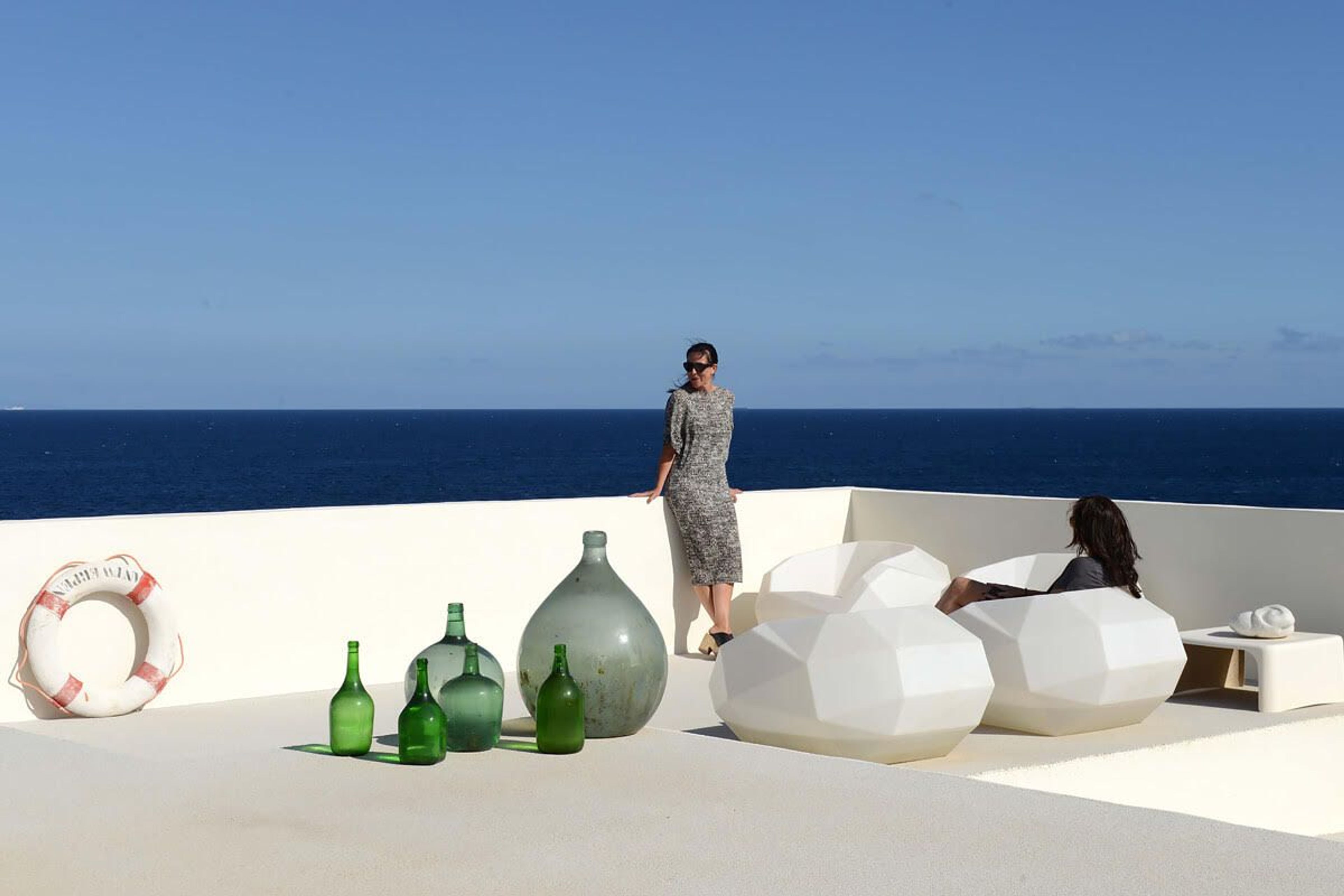
Sometimes the best adventures are the ones that take us completely by surprise. This was certainly the case when Susan Theunissen, Leo Coolen, and their family discovered a rundown modernist house on the coast of Tenerife. The couple, who have a warehouse in Antwerp full of antiques, props and other curiosities, have an eye for hidden treasures but weren't planning to buy a holiday home. While visiting a nearby house on the island designed by Herzog & de Meuron, they happened to notice its neighbor was up for sale and immediately fell for it.
The home was, in some ways, a piece of folk art, assembled by its one and only owner, piece by piece over time. But that passage of time – and the salty air – had taken its toll, and the house badly needed a facelift. Theunissen, who trained as an architect, took over the redesign of the home, stripping it down to its bones, removing eight different types of floor tiles and replacing them with a unifying carpet, painting the walls, and using materials with a 1970s feel, she says, to maintain the home's soul.
Today, Casacosta is faithful to the spirit of modernism in which the home was built, but it's filled with a cornucopia of wonderful objects. You'll find antiques, vintage pieces, and contemporary art... African carvings, a Man Ray mirror, Joan Miró paintings, oversized chicken photographs, and a giant iguana who takes centerstage on the terrace.
This is a home to explore and enjoy. It's certainly not hufterproof, as we discovered when we reached out to Susan Theunissen to find out more.

Can you tell us what drew you to this remarkable house?
Susan Theunissen: "We found the house by accident. We were not really looking for something in Tenerife, but the weather – never too hot but always nice, even in winter – was a big plus. The location of the house, almost in the ocean, with a large natural pool in front and waves sometimes 20-30 meters high, attracted us.
"The house was a ruin, but I could see what the potential was. We started to renovate and never stopped because so close to the ocean, all things constantly need repairing and replacement. The nature in Tenerife is quite rough, especially in our area, and the house is also not like most holiday homes. It's a bit edgy!"
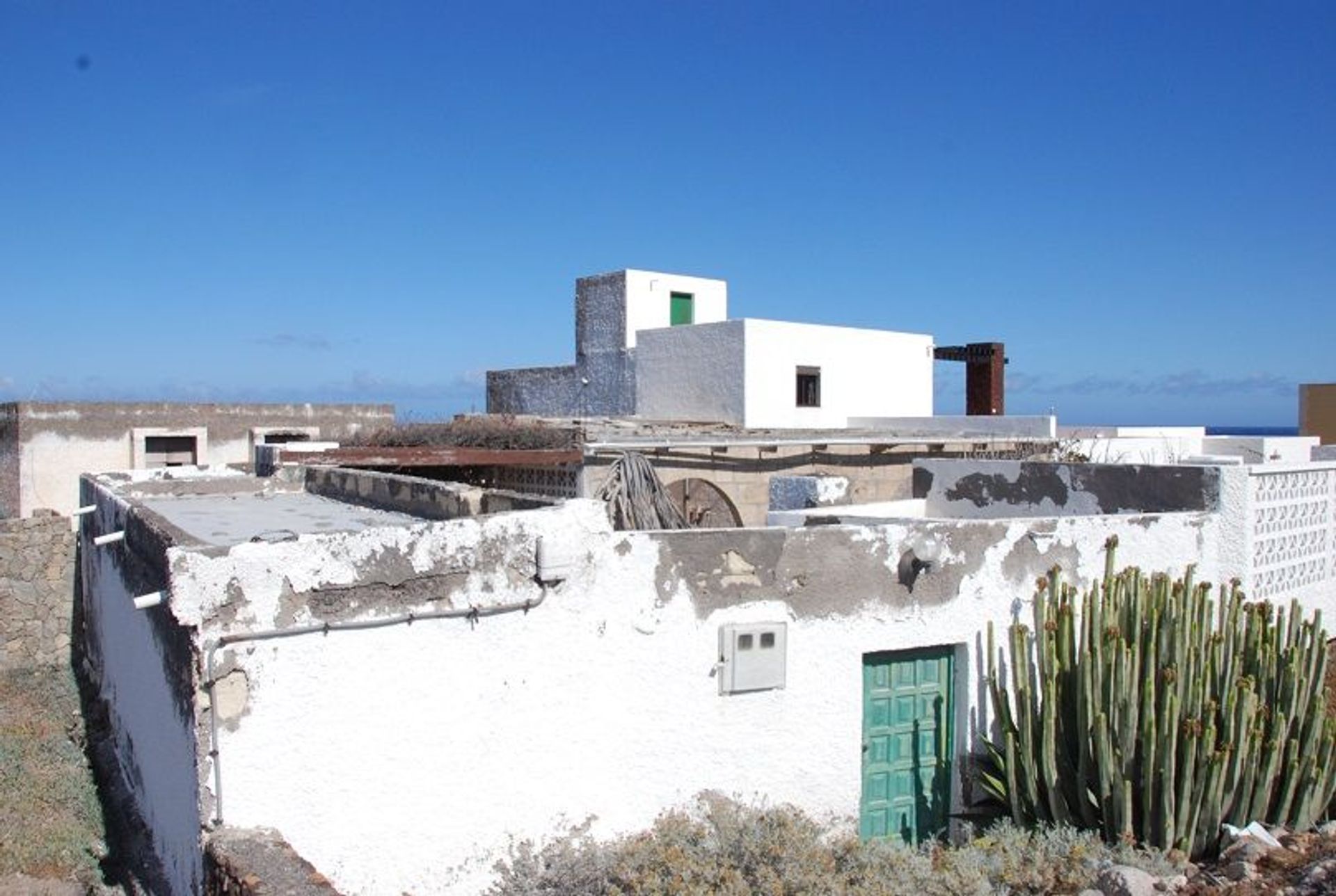
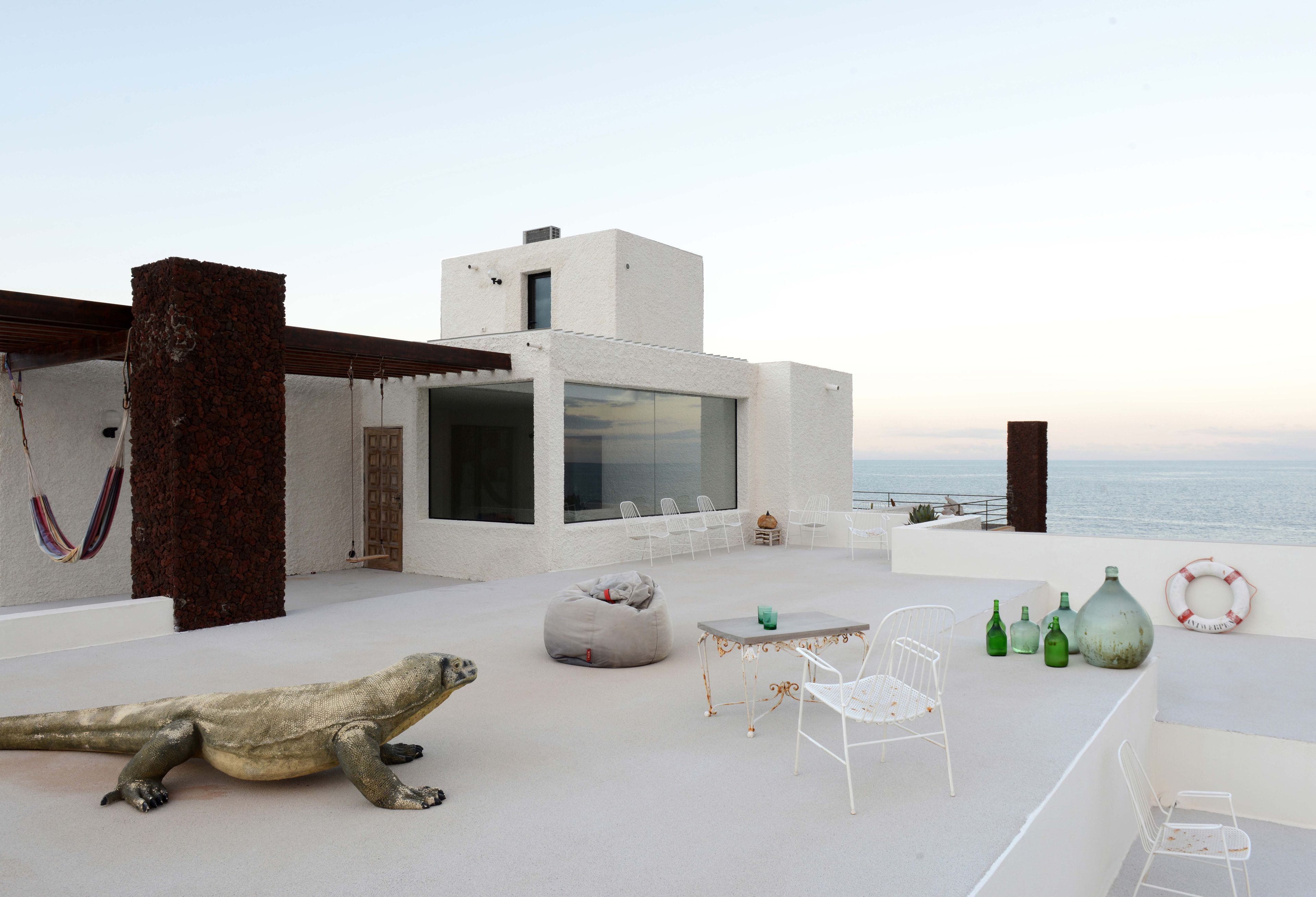
You said extensive remodeling was involved in bringing the home back to life. What were the biggest challenges?
ST: "The biggest challenge was the license. The house is built close to the sea, so everybody was watching. Now, the biggest challenge is to look for materials which last in this climate. Even concrete gets attacked by the salt.
"We removed a lot of ugly things, made spaces bigger and changed the outside, made a stone garden, concrete terraces in the front, and took away the 'castle' style things, and we tried to add a South American atmosphere by, for instance, making all walls inside grey with cement.
"And we took lots of our art, furniture and decoration from Belgium. For a long time already, my husband and I have been working together; we renovate old buildings here in Antwerp, but our main business is Sprookjes. We have a huge stock of vintage, brocante, antique, props, used for the decoration of bars, shops, hotels and rented for movies, events, fashion shows, and so on. At the moment, our main interest is old lighting, and we probably have the largest stock around, mostly still unused in boxes."

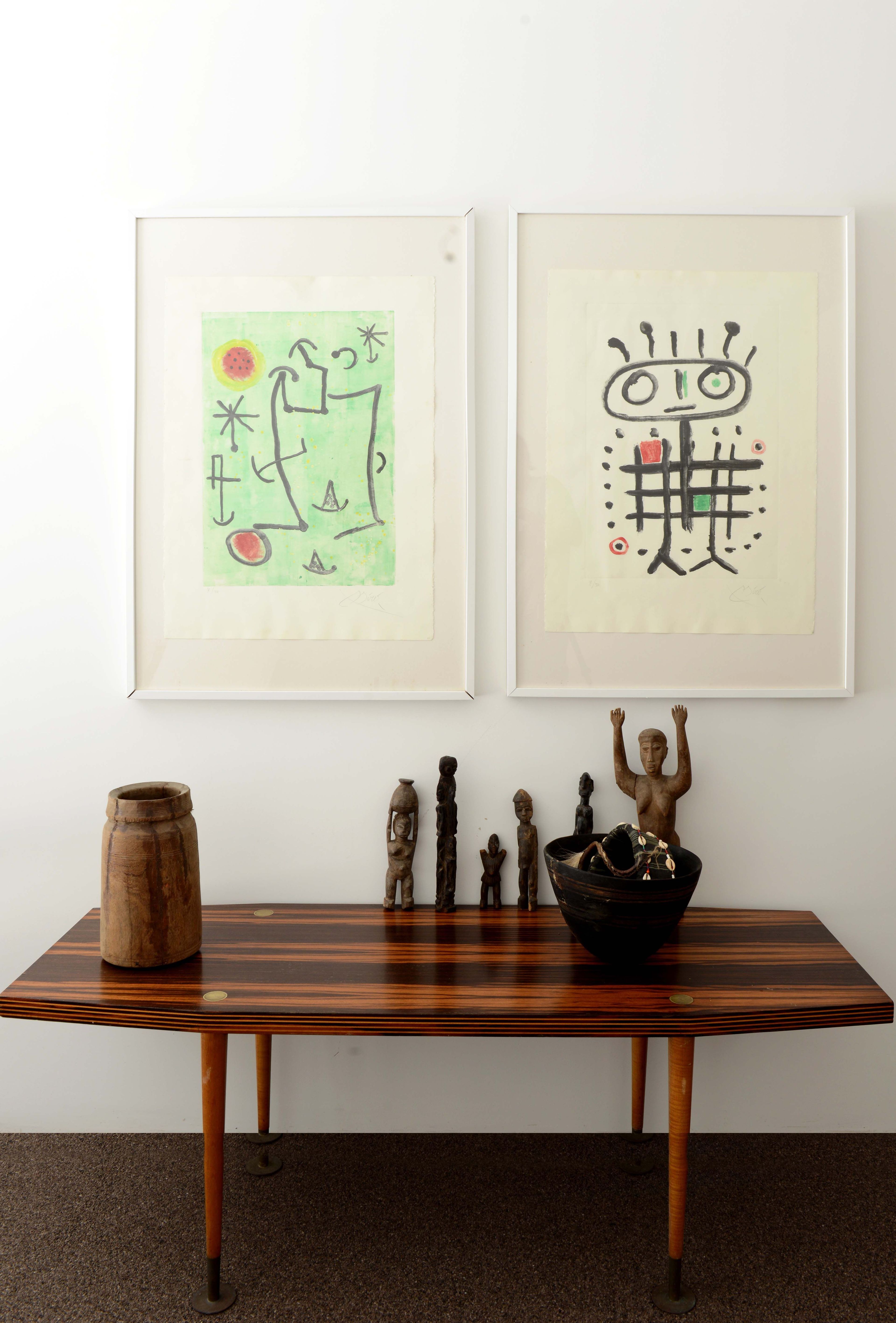
How would you describe the home that you've created, and how much of yourselves is in it?
ST: "It is absolutely a family holiday home. It was made for us, not made hufterproof for renting. That's a Flemish word that means you make your place very firm and safe where nothing can be broken or stolen, like most houses which are rented. So, yes, it is very personal, every little detail, architecture or decoration is from us and discussed together."
We love the art throughout the home. Can you tell us about why you chose the pieces you did?
ST: "We do have a lot of art indeed. There are the chicken pictures from the Belgian artist Koen van Mechelen, who is quite famous for his search to make ‘one universal type of chicken'.
"We also have a lot of art by our local friend Gabriel Rocca, who works with all kinds of materials out of nature in Tenerife. He made glass windows with pine needles inside for instance and the large works with the dots are also from him. And the collection of zippers was made by Leo."
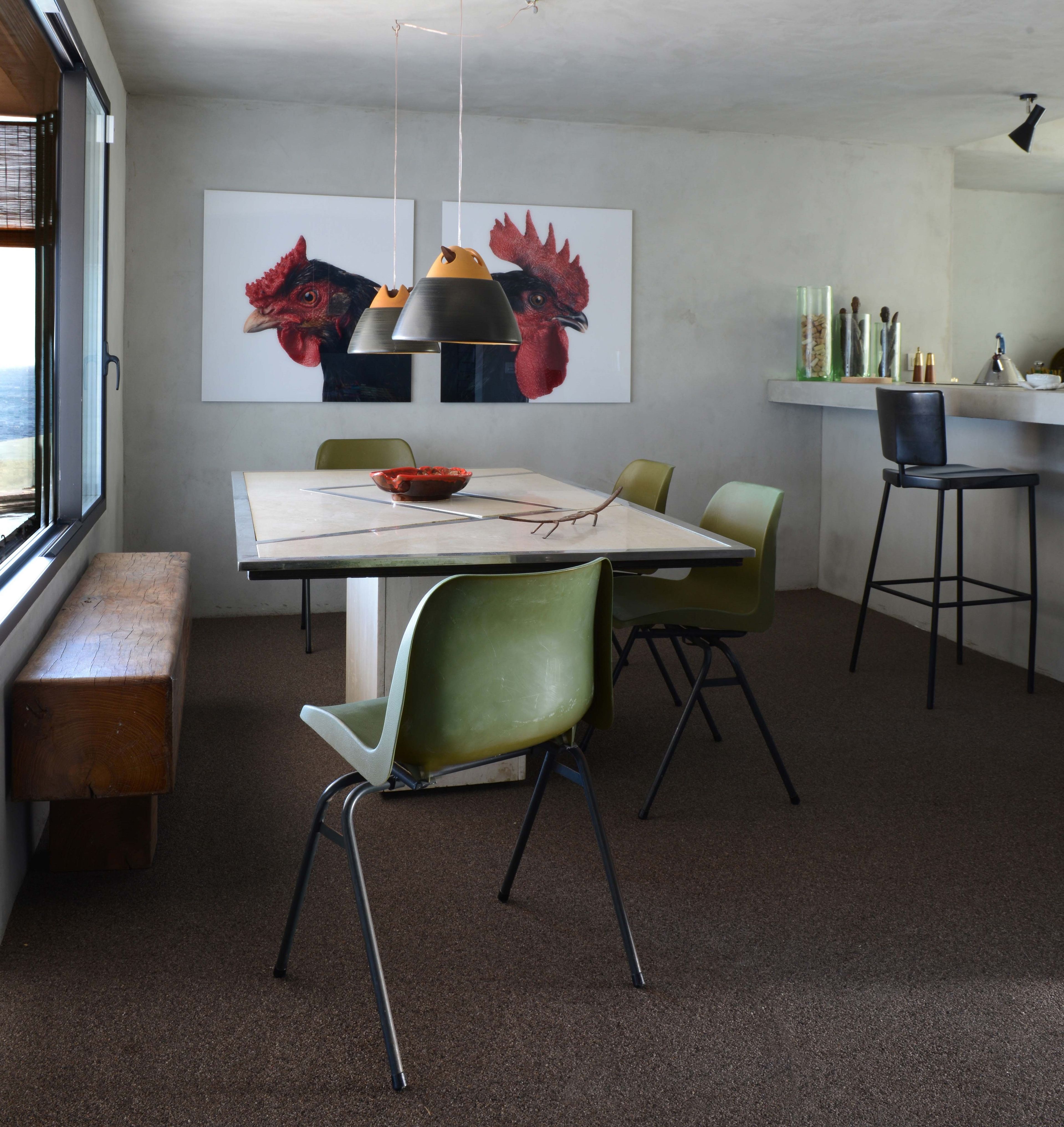
Where did the giant iguana come from?
ST: "Actually this is from our warehouse. We used to sell these. Some fun on the terrace and a reference to the tiny lizards running around."
There's an intriguing photograph at the top of one set of exterior stairs. Can you tell us about that?
ST: "It's by Godewijn Daled, a friend of ours. He's a fashion photographer who became an art photographer. He made portraits of our oldest children just before they became teenagers. This picture is an old man he saw on the streets of Antwerp, and he thought he had an interesting face. We bought it a long time ago, and because it also could look like a fisherman or sailor (and because Antwerp is already full!), we hung it in our Tenerifian house."

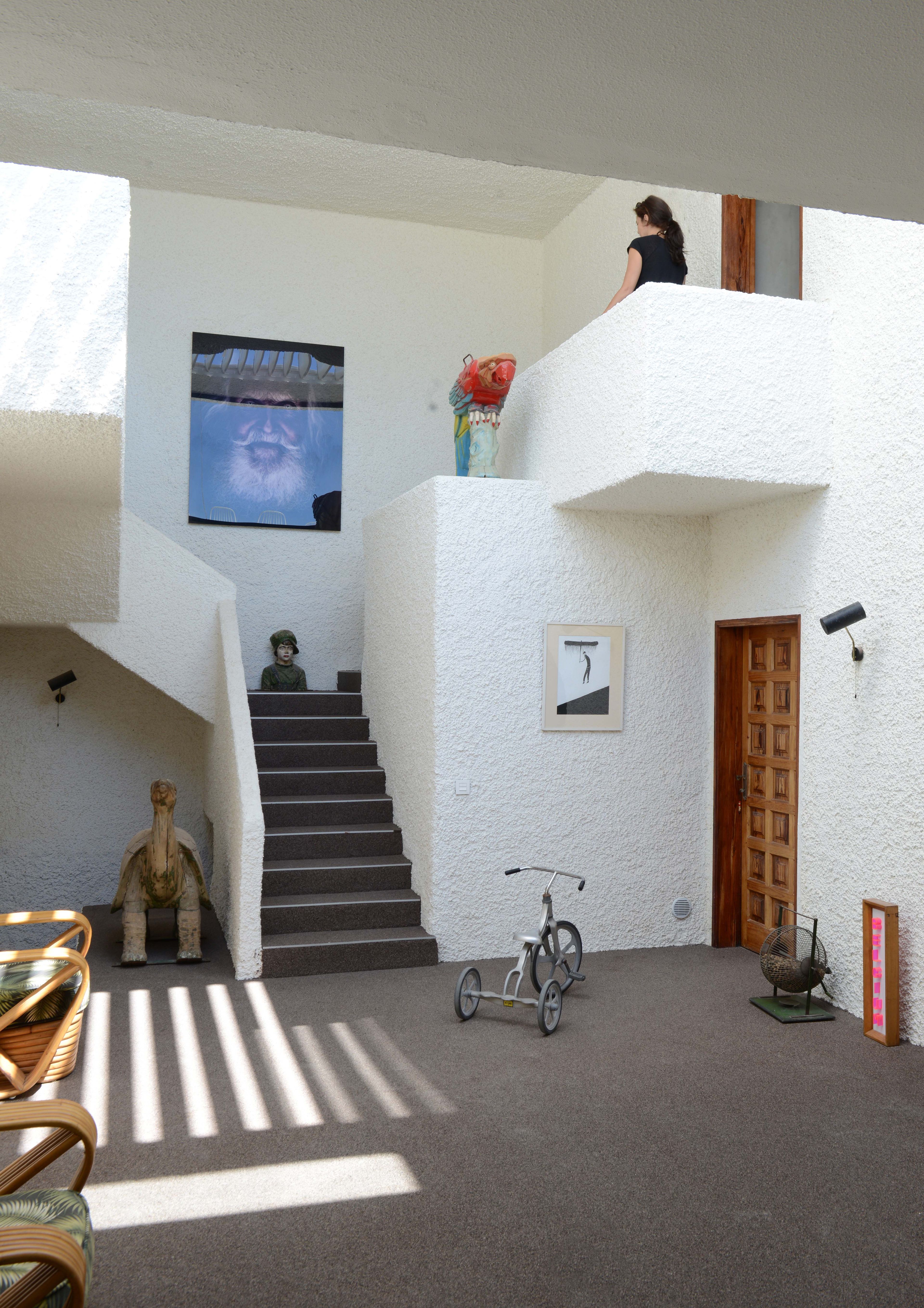
Continuing with the marine life theme, there's a black crab under the Serge Mouille lights in the entrance. Where did he come from?
ST: "It is by a Belgian artist who was also a client in our company, and we exchanged it years and years ago. We brought it here because bronze is resistant to the climate. We had a beautiful iron wired plane on our roof, but it did not last, and we had to transport it back to Belgium before it fell apart!"

Casacosta hugs a dramatic cliff face near El Poris on the southeast coast of Tenerife. There are two villas on the site that sleep up to 23 guests between them, and they can be booked separately or together. Discover the dramatic setting, the art and the whimsy here.
